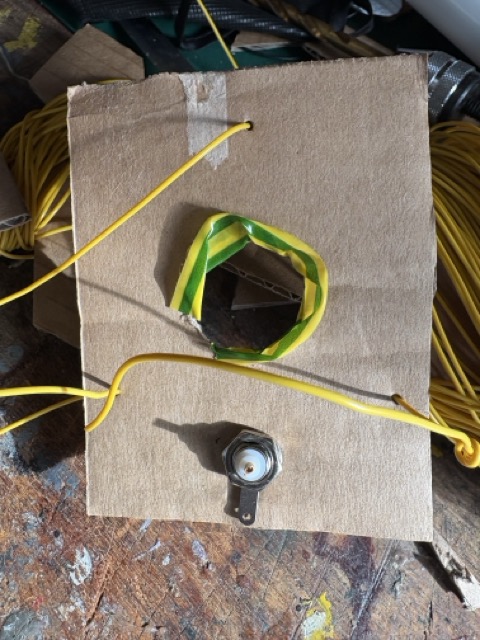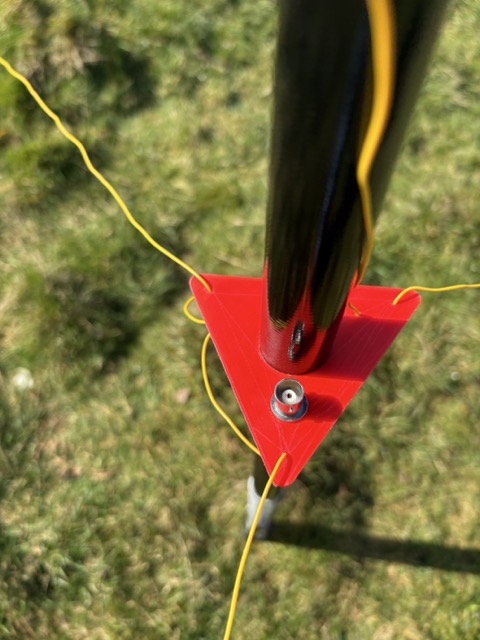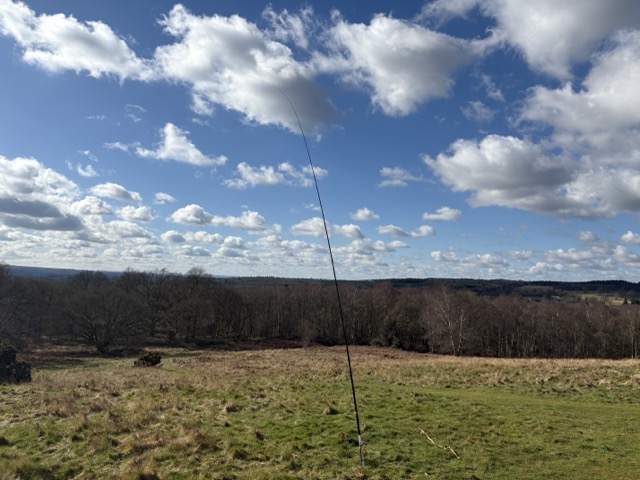I’ve been struggling to get HF working for me. I replaced the Yaesu FT-818nd’s internal battery, and figured out that there is a 11.5V threshold to get the full 6Watts out (more info can be found in my previous blog post: https://m7isy.rootfs.net/2024/12/06/yaesu-ft-818nd-the-11-5-volts-that-nobody-told-you-about/). I attempted to check my propagation by using the reverse beacon network and web SDRs, with mixed results. I felt like I had hit a brick wall, and it was time to ask for help. Luckily, I am currently participating in the bath based distance learning intermediate course, so I took advantage of the student forum and asked for help.
The responses were hugely helpful, ranging from tips about when to go on the air, which bands to try (Saturday or Sunday morning on 20 or 40m), and ensuring that your antenna is correctly tuned. Steve Hartley G0FUW, was kind enough to send me a pdf for a 1/4 wave ground plane antenna for 20m. This was actually an old SOTA Beams kit that they do not sell anymore. You can find the pdf on their website: https://www.sotabeams.co.uk/content/20m%20GP%20Instructions.pdf.
Luckily, we had 100m of antenna wire (coincidentally it was from SOTA beams), and a mast, so we decided to give it a go. The first problem we encountered, was that the mast the antenna was originally designed for was 7m tall, but ours being the SOTA beams carbon ultra-light mast was only 6m. This meant that the radials would sit lower than the original design. The instructions specified to ensure that the angle between the radials and the ground was no more that 40degrees, which seems straightforward. So we decided to go for it, and we could make adjustments to the angles of the radials, measuring the SWR with the nanoVNA, in case that was necessary.

The first step was to cut the antenna wire into 4 lengths of 5.13m. Then, we needed to build the plate to sit on the mast at the correct height, which is where the radials and the radiator meet and connect to the BNC connector. The prototype was built out of cardboard. We made the hole in the centre to sit roughly 5.13cm from the tip of the pole. As you can see from the above picture, we were a bit off with sizing so had to make the hole slightly smaller with the help of electrical tape. The radiator was then soldered to the positive pin of the BNC connector, and the radials to the ground of the BNC.
To set up the antenna for testing, we first tied the radiator to the very tip of our 6m mast with a bit of string, and then slid the cardboard plate over the mast. Then we could extend it to full height, securing the mast to a stake in the ground. Lastly, we stretched out the radials and tied them to posts, ensuring that the angle was fairly flat and not steeply down to the ground. We attached the nano VNA to it, and to our surprise, we read an SWR of 1:1.2 on the 20m band! We connected the Yaesu ft-818nd to it, and finally made a QSO on HF to central Germany from Southern England. The antenna seems to be a success!

The finishing touch was to replace the plate with a 3D printed one, as the cardboard prototype had started to get a bit bent and worn with just a few uses. The sides of the triangle are 9cm long, with 1.2mm size holes for the antenna wire, all 7cm apart. The hole in the centre is 25.5mm, and we sanded it down so that it would not scratch the mast, and to widen it slightly so that it would sit where we wanted it to.
In the picture below you can see the setup – the actual antenna wires are hard to see clearly, as they are yellow and blend pretty well with the grass! Its very lightweight, as you only need to carry the antenna wires and the mast, however it is worth considering how to set up the radials. We drove to the location below, so were able to bring gardening bamboo sticks to stick in the ground and attach the radials to. In the SOTA beams guide, they secure the radials by adding a couple more metres of string to the end of the radials, and pegging that down, which we have not yet tried. This is partly due to space considerations – the radials are 5.13m long, and adding another metre or so of string to the end of them would make it hard to find enough room to set it up.

I have now made several QSOs on HF with the 1/4 wave ground plane antenna. The difference seems to be paying attention to band conditions, and using a resonant antenna instead of a long wire and tuner.
